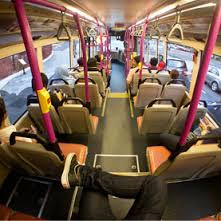People responded both because they wanted to be connected and because once they learned the limits of their own networks, wanted to expand them. The impetus to connect and to be seen as connected was part of the movement's inherent, if unstated and perhaps unrecognized genius.
What we have learned, subsequently, may be of equal moment: that our 'hidden' or unrealized networks may be as vast - or greater - and that their potential, both for good or ill, is potentially powerful as well. As the following article explains, our informal interactions, whether online or in person, constitute an array of connections whose existence we take for granted and about which we may be even unconscious. However, they have the power to help spread ideas, influences, create communities or bring them down in ways about which we remain largely incognizant. That lack of recognition promises to be short lived, given the impetus to buy, sell and reframe our world view. JL
Sarah Fecht reports in Scientific American:
Although scientists have long suspected our passive interactions with “familiar strangers” may be more important than we realize, such encounters have gone largely unstudied.
You can find them everywhere in your own neighborhood—the older gentleman who sweeps the sidewalk in the mornings, the couple that’s always walking a pair of golden retrievers, the grumpy cashier at the supermarket. Chances are you’ve never had a conversation with most of these strangers, but you’ve made assumptions about who they are and what they’re like, to the point where you feel like you know them.
“Usually when people study social networks they mostly use questionnaires and interviews to analyze connections between family, friends or co-workers, but it’s very difficult to ask questions about people they don’t really know,” says Juliette Stehlé, a physicist affiliated with the Center for Research in Economics and Statistics in Paris. “In fact it’s quite a black hole in the study of contacts.”
Now an analysis of the structure of social networks among strangers using public transportation, from researchers at the Future Cities Laboratory in Singapore, is filling that void. The study, first released on arXiv.org and now accepted for publication in Proceedings of the National Academy of Sciences, parses a huge amount of data from public transit users in Singapore, including 20 million bus trips from 2.9 million passengers over the course of five days. It’s the largest network analysis of daily encounters ever performed, and it reveals that interactions between strangers are not as random as some scientists had assumed.
Familiar strangers were first studied in 1972, when social psychologist Stanley Milgram tested public transit users in the Bronx to see whether they could recognize other passengers in photos. This and other early analyses of encounters between strangers looked mostly at small populations that don’t necessarily reflect on society as a whole. Modern technology is making such assessments larger and more quantitative.
The new study examined these interactions from a bird’s-eye view. Using anonymized data from transportation “smart cards”—which track when and where each rider gets on and off the bus—the researchers could see which passengers took the same bus at the same time, how long they were on the bus together and how frequently they wound up on the same bus. They couldn’t determine whether two passengers saw each other or interacted, however.
The data revealed when two people had recurring encounters, the encounters tended to happen at the same time each day. Repeated encounters were more likely to happen in the morning and were more likely to occur between people who kept regular schedules. Pairs of individuals who repeatedly crossed paths met one another 2.5 times per week, on average. The findings are somewhat intuitive, but this is the first time these interactions have been quantified empirically and across an entire city.
Kay Axhausen, a transport planner with the Swiss Federal Institute of Technology in Zurich and one of the authors on the new study, says what he found most surprising was how the networks stretched across the whole Singapore metropolitan area. “In the end, every Singaporean on the bus is linked to every other Singaporean on the bus,” Axhausen observes. “Clearly they can’t know all each other personally, but when you construct the networks for each person, all over these networks link up.”
The results could have implications for predicting the spread of disease through urban areas. “[T]he microorganisms that can spread from person to person and cause disease don't care whether we, their hosts, know each other or not,” Marcel Salathé, a biologist at Penn State University who was not involved in the study, wrote in an e-mail to Scientific American. Although we tend to think of diseases as spreading through friendship and family ties, he wrote, it’s important to consider all routes of transmission, including via networks of strangers. “If you know the structure of these networks, you can much better understand and predict how an epidemic is going to unfold and who should be given priority with respect to intervention strategies.”
Studies of familiar strangers could also cast light on the evolution of higher-level social interactions. “What if I went and removed all your familiar strangers from the city?” asks Eric Paulos, founder of the field of urban computing and researcher at University of California, Berkeley. “Your city would feel very different, because those people give you a sense of grounding and community even if you don’t talk to them.” According to some ideas, familiar strangers provide a soil where stronger relationships start to grow.
Looking forward, Axhausen says the team plans to test if the network patterns hold in other cities and over longer time periods. He says they’d also like to take a closer look at whether the structure of the familiar stranger networks influences other factors such as friendship networks and sense of community.



















0 comments:
Post a Comment